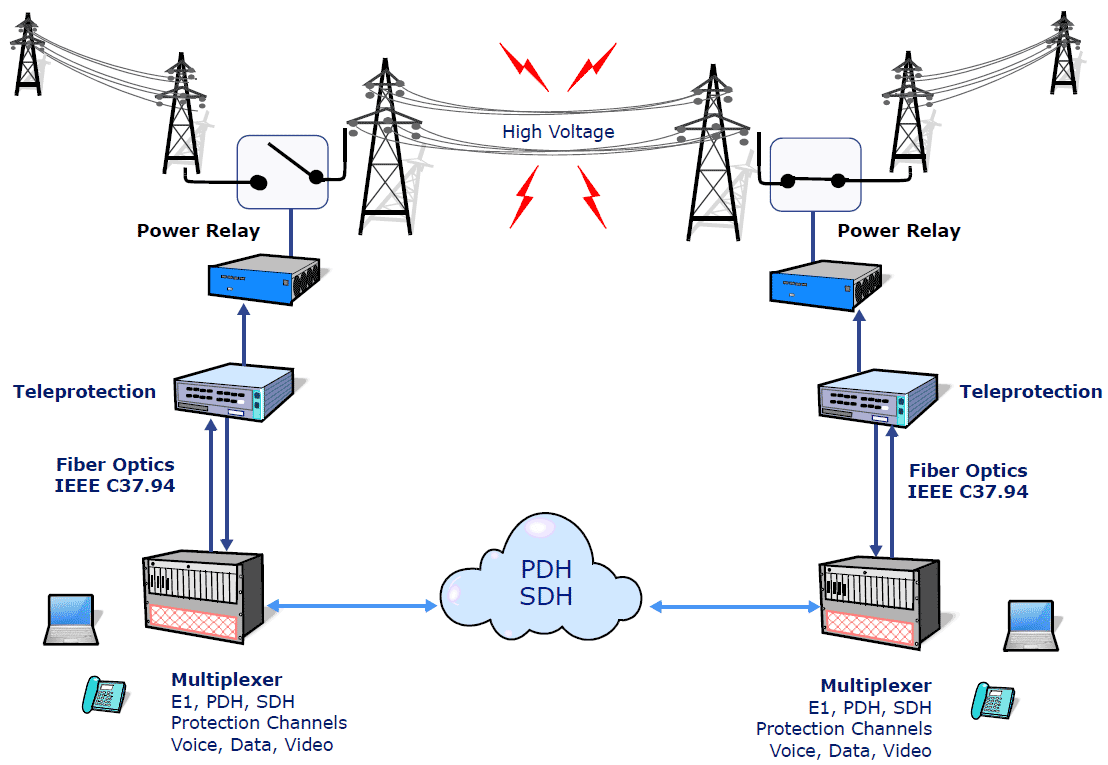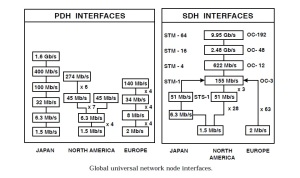
Comparison of PDH and SDH/SONET interfaces
Posted on |
Comparison of PDH and SDH/SONET interfaces
It is important to note that PDH signals can be synchronously multiplexed to the next hierarchical level without difficulty. However, it must be appreciated that the add and drop feature applies only to the complete PDH signal. Subportions of the PDH signal (e.g., one of the 45-Mb/s tributaries of a 274-Mb/s stream) can be accessed only by plesiochronously demultiplexing the whole PDH signal.
Compatibility of the present PDH and SDH is one of the main successes of the latest SDH Recommendations. Although there will no doubt eventually be a completely SDH network, a significant amount of time will elapse before this can be achieved. Present estimates indicate that it will be around the year 2000 in the developed world and much later in the developing world. The transition period requires the existing PDH network elements to be multiplexed into the SDH format.
The figure illustrates the current interfaces compared to the new SDH interfaces that will eventually be the worldwide, universal NNI. Note that even in the PDH system the primary multiplexers at 1.544 Mb/s and 2.048 Mb/s are described as synchronous. The plesiochronous nature is apparent only when multiple primary multiplexers are grouped together to form a higher-order multiplexer, or when these resulting bit streams are multiplexed to the next hierarchical level.
So, considering the new SDH interfaces, the existing PDH networks of North America and Japan allow the basic primary 1.544 Mb/s to be synchronously multiplexed up to the STS-1 at 51.84 Mb/s, and eventually to the STM-1 or STS-3c at 155.52 Mb/s. The European format is a direct synchronous multiplexing of 2.048 Mb/s up to 155.52 Mb/s. Any further higher-order synchronous multiplexing would be integer multiples of 155.52 Mb/s.








